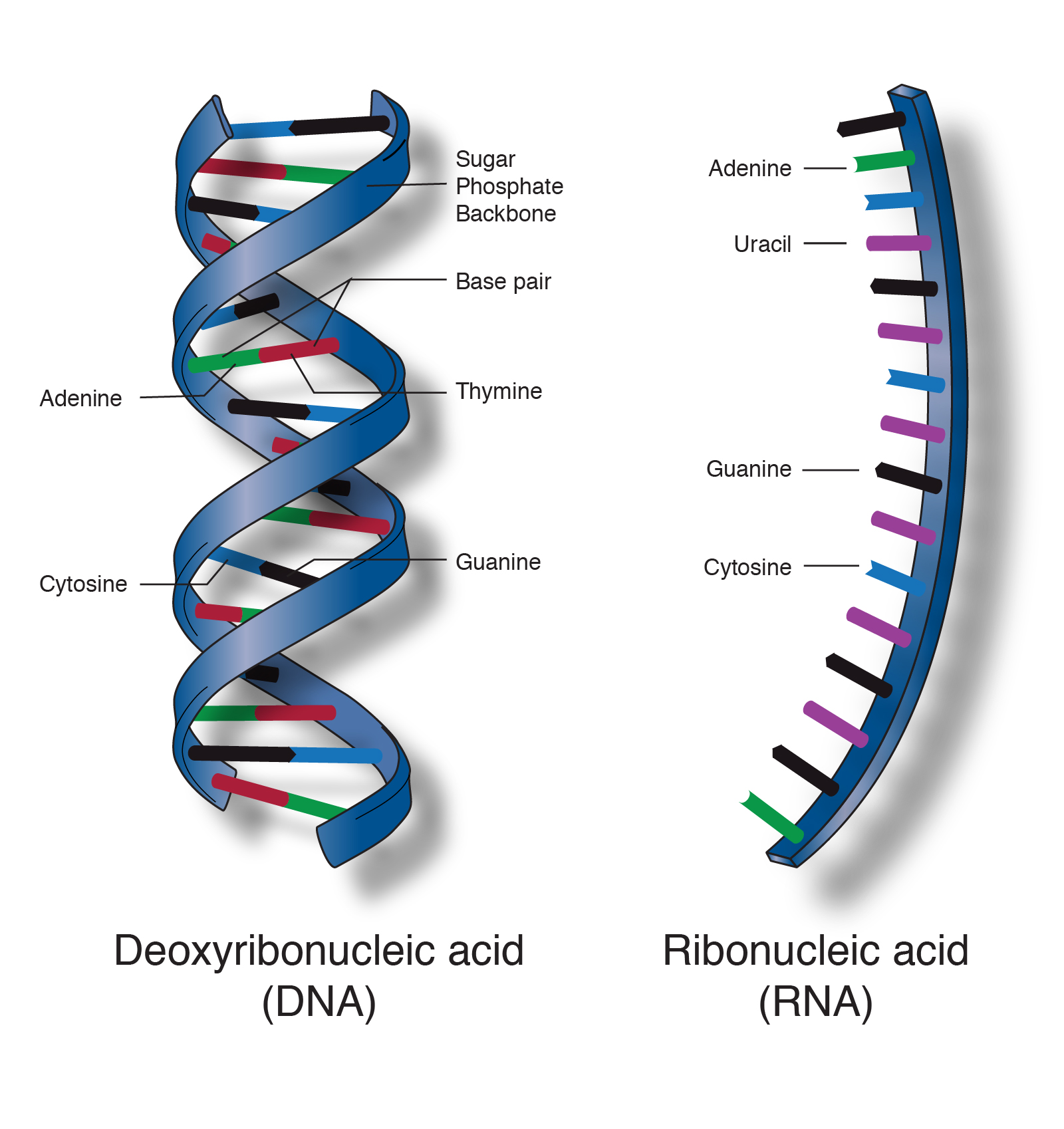Nucleic Acids Study Guide
Introduction
- Nucleic acids are large biomolecules or macromolecules found in all cells and viruses.
- A chain of nucleic acids can be broken down to organic bases such as pyrimidines and purines, sugars, and phosphoric acids.
The two main types of nucleic acids are DNA (deoxyribonucleic acid) and RNA (ribonucleic acid).
What is a Nucleic Acid?
- Organic molecules such as DNA or RNA, built of chains formed of many nucleotides are called nucleic acids.
- These chains formed of nucleotides are called polynucleotide chains.
- RNA, DNA and Adenosine Triphosphate (ATP)are nucleic acids.
Structure of Nucleic Acids
Here is how our DNA is built:
Nitrogenous bases– There are two types of nitrogenous bases – Purines (Adenine and Guanine) and Pyrimidines (Cytosine, Uracil, and Thymine).
Nucleoside– A nitrogenous base is linked to the pentose sugar through an N-glycosidic linkage to form a nucleoside.
Ribose sugar– This pentose sugar is either ribose in the case of RNA and deoxyribose for DNA.
Nucleotide-
- A nucleoside forms a nucleotide when attached to a phosphate molecule at its 5′ -OH through phosphoester linkage.
- Therefore each nucleotide has three components – a nitrogenous base, a pentose sugar, and a phosphate group.
DNA and RNA as Nucleic Acids
DNA (deoxyribonucleic acid) and RNA (ribonucleic acid) are the two main classes of nucleic acids.

1. DNA
- DNA is the genetic material of most of the cells and carries instructions for the proper functioning of the cell.
- There are four different types of bases: cytosine (C), adenine (A), guanine (G), and thymine (T) in DNA.
- DNA (deoxyribonucleic acid) consists of two polynucleotide chains.
- The two polynucleotide chains together form the double-stranded helix structure of DNA, with the two strands connected by hydrogen bonds.
2. RNA
- RNA is also a nucelic acid and plays a vital role in creating proteins by decoding the instructions present in DNA.
- There are four different types of bases: cytosine (C), adenine (A), guanine (G), and uracil (U) in RNA.
- The nucleic acid RNA (ribonucleic acid) consists of just one polynucleotide chain.
Functions of Nucleic Acids
- In every living cell, DNA molecules store and copy the hereditary information and transfer it from generation to generation.
- Thus it is responsible for passing inherited traits from parent cell to daughter cell and parents to the offspring (reproduction).
- They are similar to binary codes of computers such that the computer stores information in the form of 1s and 0s, and DNA stores it in the form of genes, and its sequence of bases makes up a code.
- For the appropriate functioning of a living organism, it requires the source code in the form of DNA.
- RNA converts the information stored in DNA into proteins necessary for the various cellular activities.
- If it is not properly passed on as in certain genetic conditions or mutations, the cells cannot function properly.
Conclusion
- Nucleic acids are polynucleotides made up of monomers of nucleotides.
- DNA, RNA and ATP are nucelic acids.
- DNA is the genetic material of the cell and RNA decodes the DNA to assemble the correct amino acids into a protein.
FAQs:
1. What are the three nucleic acids?
DNA, RNA, and ATP are nucleic acids.
2. What are nucleic acids and their functions?
A vital class of macromolecules found in all viruses and cells are called nucleic acids. These include DNA and RNA. The major function of nucleic acids is storing and expressing genetic information.
3. What are the 3 types of nucleic acids?
The three types of nucleic acids include:
- Deoxyribonucleic acid
- Ribonucleic acid
- Adenosine triphosphate (ATP)
4. What are 5 examples of nucleic acids?
The examples of a nucleic acids include:
- Ribosomal RNA
- Transfer RNA
- Messenger RNA
- Adenosine triphosphate (ATP)
- Deoxyribonucleic acid
5. What are the common examples of nucleic acids?
The two most common examples of nucleic acids are DNA and RNA.
6. Why are nucleic acids called acids, and what is their importance?
- Nucleic acids are acidic. This acidity comes from the phosphate groups present in DNA and RNA molecules which are related to phosphoric acid. Therefore, they are called nucleic acids.
- A nucleic acid is a chain of molecules composed of a series of similar building blocks called nucleotides.
- Nucleic acids are the most important macromolecule for storing and carrying genetic information and instructions in living beings.
7. What is nucleic acid in chemistry?
A nucleic acid in chemistry is a chemical compound that occurs naturally and is known as the information molecule in a cell.
8. Why do humans need nucleic acids?
Nucleic acids such as DNA and RNA encode and store genetic information. They are also responsible for passing on genetic information from generation to generation.
9. What would happen without nucleic acids?
In the absence of nucleic acids, the cell would not receive the information necessary to carry out its basic functions and eventually die.
We hope you enjoyed studying this lesson and learned something cool about Nucleic Acids! Join our Discord community to get any questions you may have answered and to engage with other students just like you! We promise it makes studying much more fun 😎
Sources:
- Nucleic Acid. https://biologydictionary.net/nucleic-acid/. Accessed Nov 124, 2021.
- Nucleic Acid. https://www.britannica.com/science/nucleic-acid. Accessed Nov 24, 2021.
- Nucleic Acids. https://flexbooks.ck12.org/cbook/ck-12-biology-flexbook-2.0/section/1.13/primary/lesson/nucleic-acids-bio/. Accessed Nov 24, 2021.
